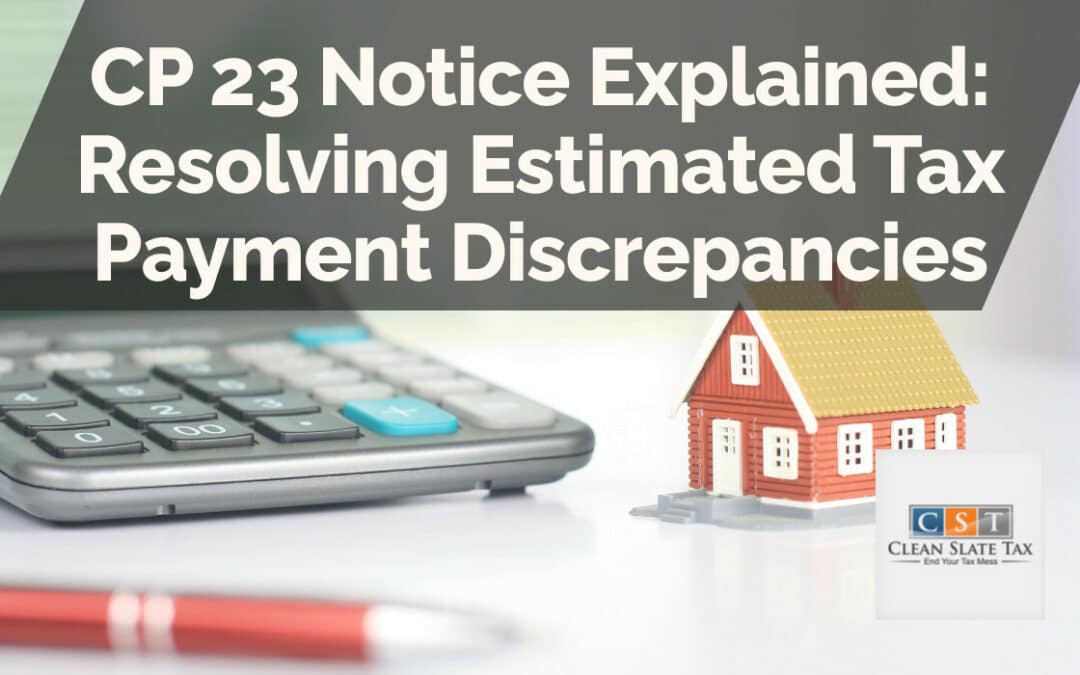The CP23 notice is a crucial component of the American taxation system. It is a tool used by the Internal Revenue Service (IRS) to notify taxpayers of inconsistencies between their estimated tax payments and the actual amount claimed on their tax returns. Understanding the intricacies of the CP23 notice can help taxpayers resolve any discrepancies promptly, avoiding unnecessary penalties or fees from the IRS. This article delves into the CP23 notice, shedding light on its purpose, how it works, and steps to rectify any possible inconsistencies in your estimated tax payments.
What is a CP23 Notice?
A CP23 notice is an official correspondence from the IRS to a taxpayer. It denotes a discrepancy between the estimated tax payments the IRS received and the amount the taxpayer reported on their 1040-ES form. The IRS sends this notice to inform the taxpayer about the discrepancy and provide insight into correcting it.
Why Do You Receive a CP23 Notice?
You may receive a CP23 notice if the IRS identifies a difference between the amount of estimated tax payments you reported on your tax return and the payments recorded with the IRS. The discrepancy could be due to an error when filling out your tax forms, an IRS error, or a discrepancy in the reporting between your bank and the IRS.
The Impact of Receiving a CP23 notice
Receiving a CP23 notice doesn’t necessarily mean something negative. It is a notification tool used by the IRS to ensure absolute transparency and accuracy in tax reporting. This notice serves to inform and enable taxpayers to correct any potential discrepancies, thereby minimizing the risk of penalties.
How to Resolve a CP23 Notice
- Review the Information: Begin by thoroughly reviewing the details mentioned in the CP23 notice. Compare these with your records to identify where the discrepancy lies.
- Contact Your Bank: If you cannot locate the discrepancy or if your records match your tax return, reach out to your bank to verify the payment dates and amounts.
- Reach out to IRS: If the discrepancy still persists after reaching out to your bank, consider contacting the IRS for further assistance.
- Professional Help: If the issue seems too complicated, don’t hesitate to ask for professional help. Tax experts can often identify and resolve problems much faster than individuals.
Frequently Asked Questions
What should I do if I receive a CP23 notice from the IRS?
If you receive a CP23 notice, you should first review your tax return and payments. If you can’t identify any discrepancy, consult with a tax professional or contact the IRS for further clarification.
Am I obligated to respond to a CP23 notice?
Yes, you are obligated to respond to a CP23 notice. Ignoring it can potentially lead to penalties. Respond within the timeframe specified in the notice to avoid further complications.
Can receiving a CP23 notice affect my credit score?
No, receiving a CP23 notice won’t directly affect your credit score. However, if any unpaid taxes result from the discrepancy and they go unpaid, it could potentially harm your credit score.
Knowing the nuts and bolts of a CP23 notice can empower taxpayers to respond appropriately and on time. If ever in receipt of this notice, take prompt action – check your records, ensure all payments are made, and reach out to professionals if necessary. Understanding and managing your tax commitments proactively can save you a great deal of hassle down the line.





